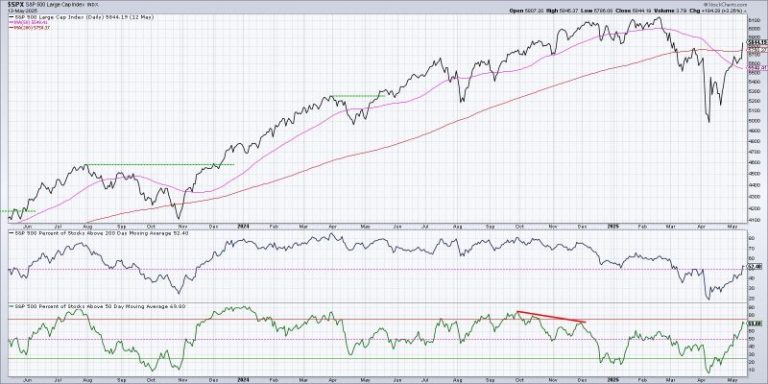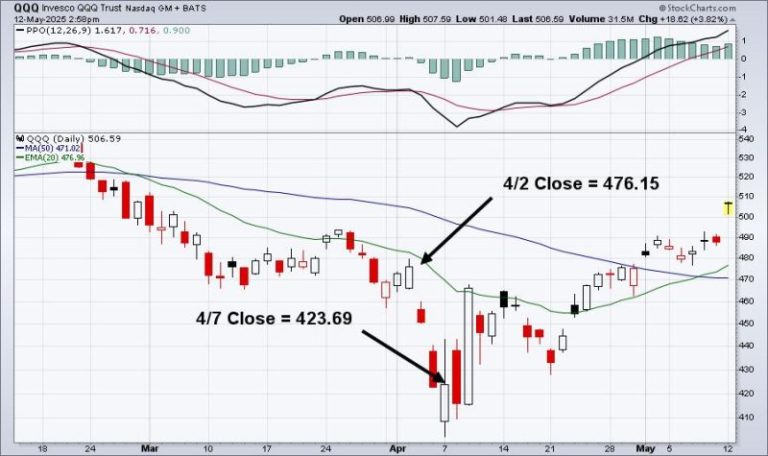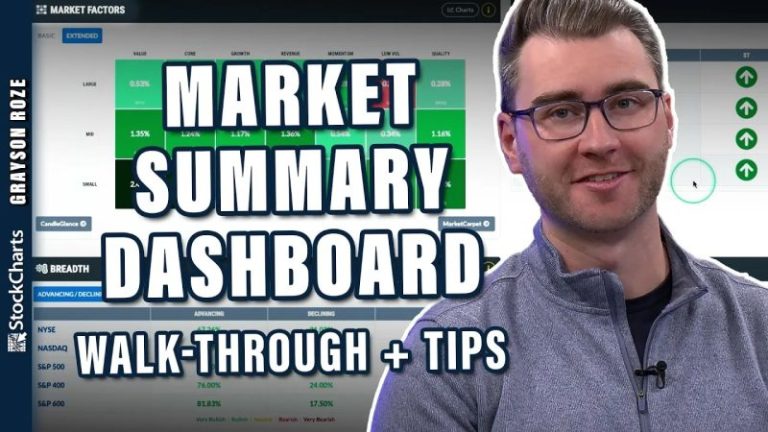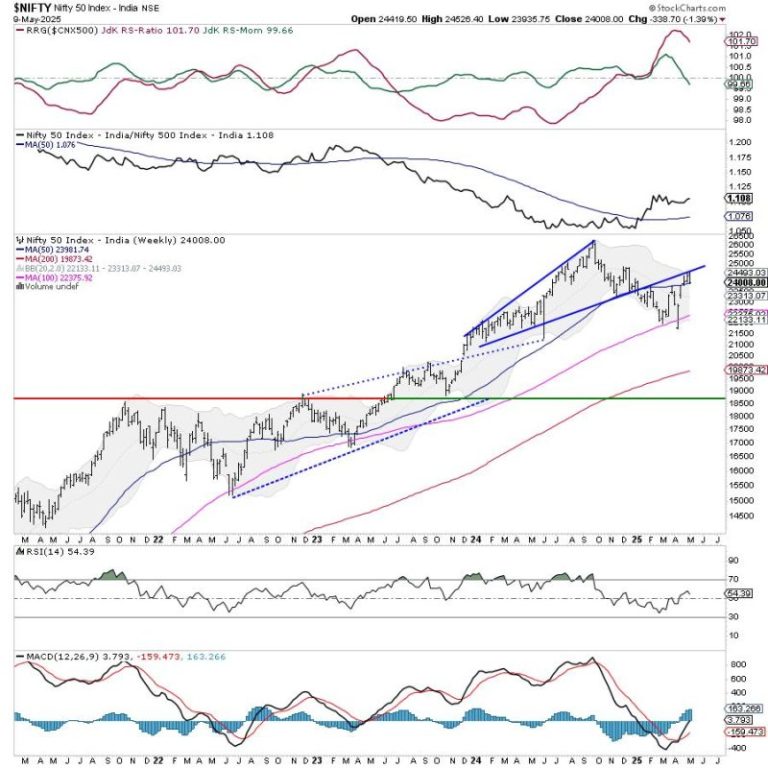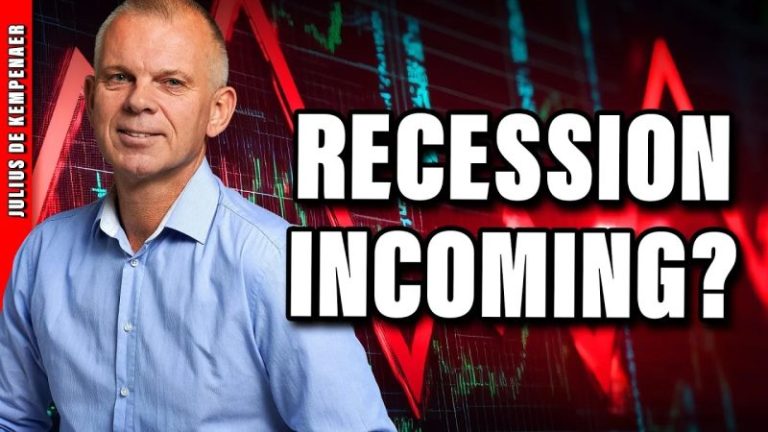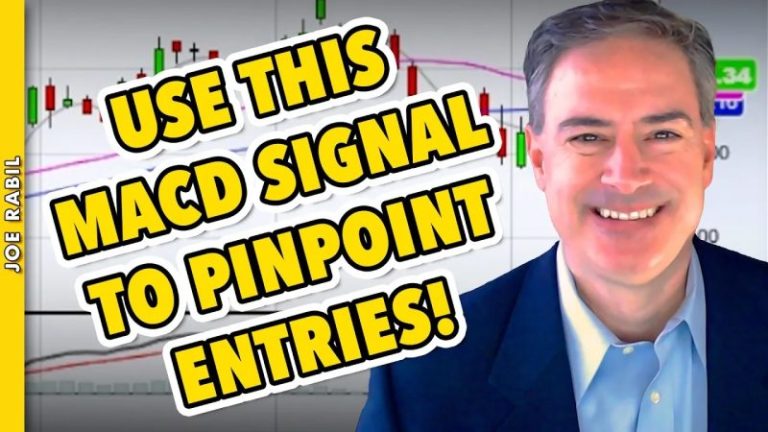For months, investors have been on edge over U.S.-China tariff tensions, bracing for everything from fears of empty shelves to rising prices. But after this weekend’s trade talks, where both sides agreed to temporary tariff cuts (emphasis on temporary), stocks surged.
On Monday, the Dow Jones Industrial Average ($INDU) jumped 1,160 points, while the S&P 500 ($SPX) and Nasdaq Composite ($COMPQ) rallied 3.26% and 4.35%, respectively.
Monday’s rally sparked hopes that the worst may be over. Yet analysts remain split: some see signs of a bottom, while others warn this 90-day pause is just the start of a long, messy negotiation.
So here’s the critical question: If this is the bottom, which sector (or industry) leads the rebound, and is it worth investing in it right now? For investors, the answer could be the difference between riding the next bull wave or watching it pass by.
Nasdaq-100 Shows Strength, but Which Sector Leads?
Checking StockCharts’ Market Summary midday on Monday, the Breadth panel showed that the tech-heavy Nasdaq 100 ($NDX) had the most percentage of stocks (62%) trading above their 200-day simple moving average (SMA), indicating early strength and recovery (displayed in the Moving Averages tab).
FIGURE 1. MARKET SUMMARY – INDICES TRADING ABOVE 20 TO 200-DAY MOVING AVERAGES. The Nasdaq 100 is the most bullish index above the 200-day, warranting a closer examination.
About 51% of the Nasdaq 100 is made up of Information Technology stocks, while Consumer Discretionary and Communication Services together account for roughly 31% of the index.
Information Technology Dominates the Index
To get a clearer sense of market breadth, it’s useful to examine the sector-level Bullish Percent Index (BPI), which shows the percentage of stocks within each sector exhibiting technical strength.
FIGURE 2. MARKET SUMMARY SECTOR BULLISH PERCENT INDEX. While many sectors have bullish BPIs, the tech sector is leading.
While Communications and Discretionary are exhibiting technical strength, the Information Technology sector is leading the pack, with over 91% of stocks triggering Point & Figure buy signals.
Semiconductors: The Bellwether to Watch
While tech is also comprised of various industries, only one—semiconductors—is widely regarded as a “bellwether” industry. Shifting over to the US Industries panel, semiconductors displayed the highest StockCharts Technical Rank (SCTR).
FIGURE 3. BELLWETHER INDUSTRY SCTR SCORES. Among the bellwether industries listed, chipmakers are outpacing everything else.
While my threshold for bullish SCTR reading is 76, the semiconductor industry is the only bellwether industry that clears that bar.
But what might the performance of the Nasdaq 100, semiconductor, and broader market performance look like side by side? To answer this question, I plotted all three on a one-year PerfCharts view.
FIGURE 4. PERFCHARTS OF SEMICONDUCTORS, NASDAQ 100, AND THE S&P 500. Here, semiconductors aren’t looking so hot, being the laggard of the bunch.
Using VanEck Vectors Semiconductor ETF (SMH) as the industry proxy, you can see that SMH was leading the Nasdaq 100 and S&P 500 last summer, but began lagging the two indexes starting in November. SMH was the hardest hit in the aftermath of the Trump tariffs, and, while it’s recovering, its performance is still trailing both indices.
This raises two key questions: First, is SMH’s upswing a true recovery or a temporary bounce? And second, is it worth investing in SMH in this stage of the cycle (in other words, does it present an opportunity to catch an uptrend early on)?
Weekly Chart Signals: Bear Market Drop or Recovery?
Let’s take a closer look at SMH, starting with a weekly chart.
FIGURE 5. WEEKLY CHART OF SMH. From a primary trend perspective, one that can last years, the uptrend is arguably intact, though facing challenges.
Here are the key points to look at:
- SMH is trading above the 40-week SMA (equivalent to a 200-day SMA) following a sharp price gap up. But can it hold above that level?
- SMH plunged 39.8% from its 2024 high of around $280 to the 2025 low of $170. This is a textbook bear market drop that raises the question: Is this latest surge just a bear market rally?
- On the other hand, a long-term Fibonacci Retracement measured from the 2022 low to the 2024 high found support at the 50% and 61.8% retracement levels. This kind of pullback is not only “normal”, but also supports the view that SMH’s bullish “primary trend” is still intact.
- However, the Chaikin Money Flow (CMF) is signaling weak buying pressure. For the rally to continue, there needs to be stronger accumulation, something the CMF has yet to confirm.
Daily Chart View: Support, Resistance, and Warning Signs
After looking at SMH from a broader scale, what might the price action reveal if we were to zoom in using a daily chart?
FIGURE 6. DAILY CHART OF SMH. Zooming in, SMH’s situation looks even less bullish.
This chart tells a tougher story: SMH looks ready to re-enter the months-long trading range it broke to the downside in March.
Should You Invest In SMH? Here’s What to Watch
To answer this question, here’s some points you might want to focus on:
For one, note how closely the stochastic oscillator cycles mirror SMH’s fluctuations. With a reading above 96, SMH may be due for a near-term pullback.
Should it pull back, SMH will need to remain above or bounce at the $210 support range (highlighted in blue) for the current, albeit small, uptrend to remain intact. Below that, it might bounce at the consecutive swing lows—$185 and $170—but such a deep pullback indicates weakness and raises the possibility that SMH may slip back into the trading range (highlighted in yellow) that dominated a lengthy five-month period.
On the upside, SMH needs to eventually clear that same range before challenging its all-time highs at the $281 level. If SMH manages to do so, it’s likely to unfold in a series of higher highs and higher lows, which will take some time to develop.
At the Close: A Bullish Setup or Bull Trap?
While SMH has begun to exhibit significant technical strength, warning signs remain. If you’re bullish on semiconductors, the next few weeks will be critical. Holding the $210 support zone is key for keeping the uptrend intact. A drop toward $185 or $170 would raise serious doubts about the sustainability of the current rally.
If SMH can clear its trading range and build a structure of higher highs and higher lows, it could be poised to challenge its all-time highs once again. Until then, stay cautious and keep a close eye on the technical levels discussed above.
Disclaimer: This blog is for educational purposes only and should not be construed as financial advice. The ideas and strategies should never be used without first assessing your personal and financial situation, or without consulting a financial professional.


